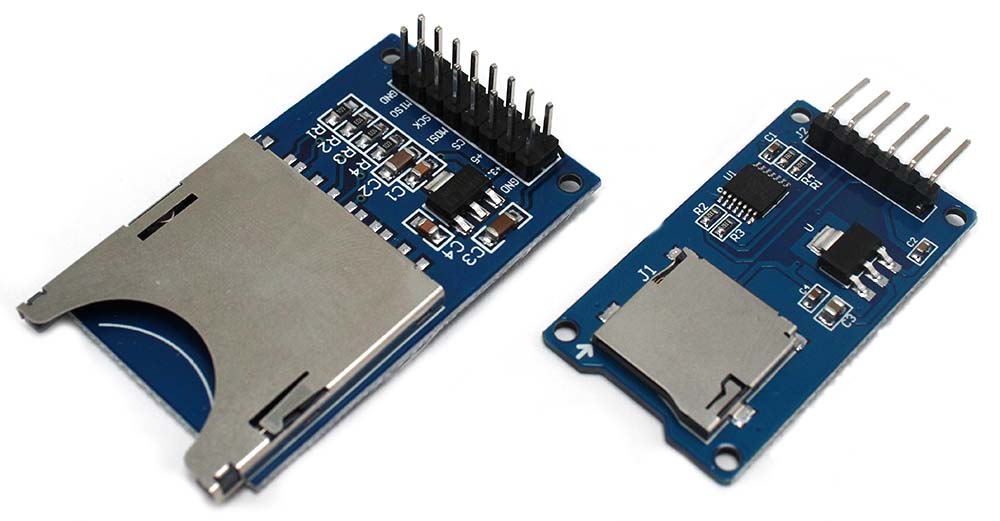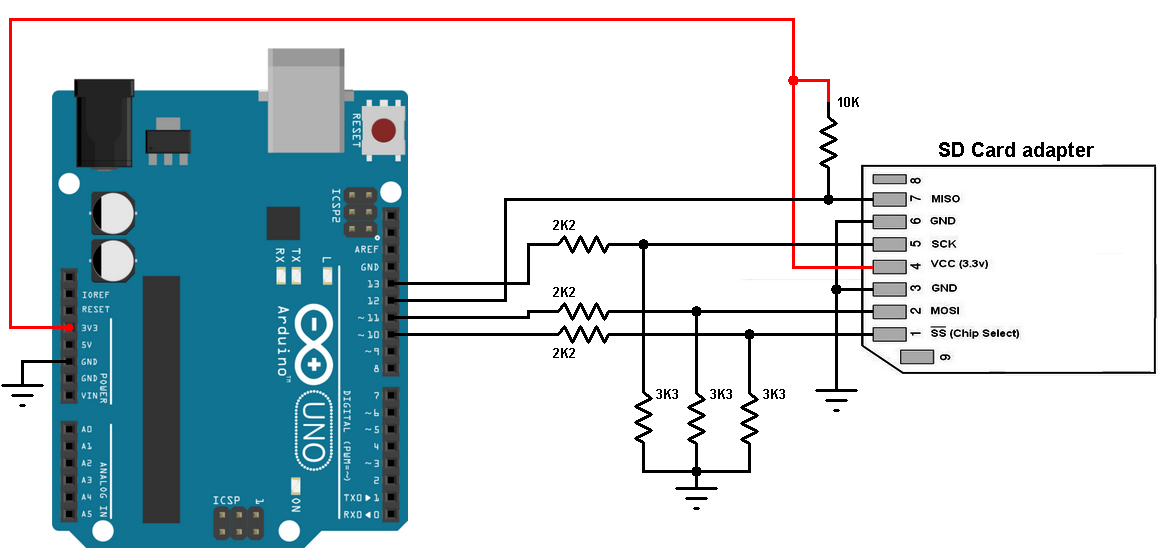

This means that the expansion board can be used with 3.3V and 5V microcontrollers. There is a level regulator that converts the logic power supply from 3.3 – 5 V to 3.3 V. It has a regulator that converts the voltage of 3.3 – 6 V to 3.3 V (I2C). The expansion card makes the connection much easier. Connecting the SD-card module to ArduinoĪfter preliminary preparation of the SD card, we can begin to connect the microSD and Arduino expansion board. The download page has instructions for using the program. In general, we recommend that you format the card before using it in any case.įor example, you can use this program for formatting: SD Card Formatter. For example, if you have a small card, 8-32 megabytes, it can be formatted for FAT12, which is not supported. The Arduino SD library that we will use supports both FAT16 and FAT32 formats. If the card is old, it is desirable to check it too. It is not known how the manufacturer formatted it. When buying a new SE card is highly likely that it will already be formatted for the FAT file system. The Arduino SD library supports both formats. This is mainly due to the availability of appropriate libraries: some support one format, some support another. It is better to use the FAT16 or FAT32 format to work with Arduino.

In principle, you can use an SD card without a file system, but it is not very convenient. The problem is that microcontrollers like the Arduino allocate a relatively large percentage of memory when working with complex file systems. It may not have a file system at all! However, 99% of computers, cameras, MP-3 players, GPS navigators require a file system format FAT16 or FAT32 for use. This means that the card can be formatted as a file system Linux, GFAT (DOS), or Mac. That is a certain structure that you must use no. SD cards are available in two form factors: microSD and SD. You only need four pins to connect in SPI mode (we will look at this issue further). The SPI mode is much easier to set up with any microcontroller. SDIO runs faster but is difficult to implement with Arduino. Instead, you can use level transmitters based on HEF4050, 74LVX245, or 74AHC125 chips. So use the shortest possible connectors and avoid resistors in the logic power supply circuit. SD cards are very sensitive – the use of resistors and long conductors when connecting leads to a significant drop in data rate. Besides, it is necessary to have a 3.3 V power supply for logic. Amperage can reach large values: up to 100 mA and even more when recording data! This means that you have to provide a quality 3.3 V power supply for the card. Also, most computers have card readers, so there will be no problem with transferring information.ħ Other useful functions What you need to know when using SD cards with Arduino Memory cards are sold in any electronics store, so there are no problems with the purchase. Memory cards are often called SD or microSD cards, and they allow you to store gigabytes of information. What if more information is downloaded? In this case, you can use the same tools as in modern video cameras, smartphones, mp3 players: a memory card! When downloading graphic or music files, you will surely need at least 1 megabyte of storage. The most trivial thing is that you can accidentally overwrite the program itself downloaded to the board. Of course, the bigger flash memory is 256 kilobytes, but there are problems with recording when using it. For example, even the Arduino Mega chip (Atmega2560, check pinout here) provides only 4 kilobytes of EEPROM for data storage. In most microcontrollers, the built-in memory is minimal. If your project needs to provide loading of audio, video, graphics, recording of any data, the question of external memory arises.


 0 kommentar(er)
0 kommentar(er)
